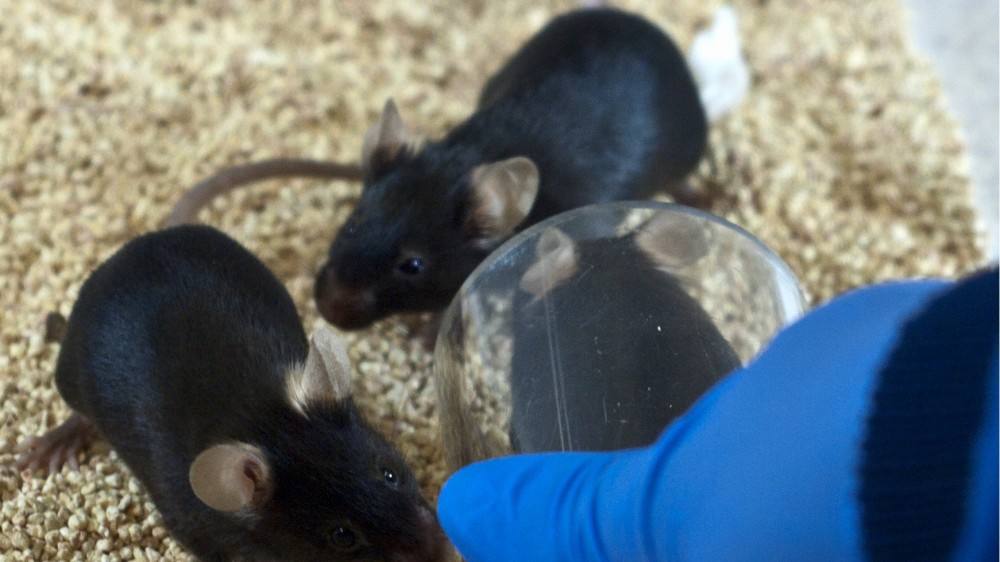On this page
- How to pick up a mouse
- Summary of research findings
- Who funded this research?
- Further external resources
How to pick up a mouse
Laboratory mice are routinely handled for husbandry and scientific procedures. Traditionally mice are initially picked up by the base of the tail, sometimes with a hand positioned to support the animal’s body.
Research has shown that picking up mice by the tail induces aversion and high anxiety levels, as assessed by a range of measures, which can be minimised by instead using a tunnel or a cupped hand. As well as having animal welfare benefits the research, led by Professor Jane Hurst at the University of Liverpool, has shown that picking up mice by the tail can impact on scientific outcomes, with mice handled by tunnel and cupping methods showing improved performance in behavioural tests compared to traditional tail handling.
We are supporting the delivery of in-person workshops on refined mouse handling to UK facilities. This free, half-day workshop is suitable for all animal facility staff, new PIL holders and early career researchers and will be delivered by animal technicians from Newcastle University.
Places are limited, contact us for more information: tech3Rs@nc3rs.org.uk
The research has since been replicated by other groups, who have shown that the method of handling can affect physiological parameters and behaviour, including the response to reward.
We also have a series of video interviews from champions based at facilities around the UK discussing how they successfully implemented non-aversive mouse handling methods.
Summary of research findings
Using a tunnel or cupped hand to pick up mice causes less anxiety than traditional tail handling. Mice quickly habituate to tunnel handling and can subsequently be restrained by the scruff or tail base for procedures or health and welfare assessments without negating the positive impacts of the non-aversive capture.
Non-aversive methods do not add time to husbandry or procedures provided staff are adequately trained. The investment in training should be outweighed by the benefits observed with more reliable behavioural and physiological responses in the mice.
Who funded the research?
The original research by Professor Hurst was funded by the BBSRC and the NC3Rs. It won the 2010 NC3Rs 3Rs Prize. Mr John Waters, the animal technician who supported the research, won the 2017 IAT Andrew Blake Tribute Award and was named Outstanding Technician of the Year at the 2020 THE Awards. Professor Hurst was awarded an OBE for services to animal welfare in the 2020 New Year Honours list.
External resources
The North American 3Rs Collaborative have compiled a page of resources on refined mouse handling, including a high-level overview slide deck that can be downloaded and edited.

